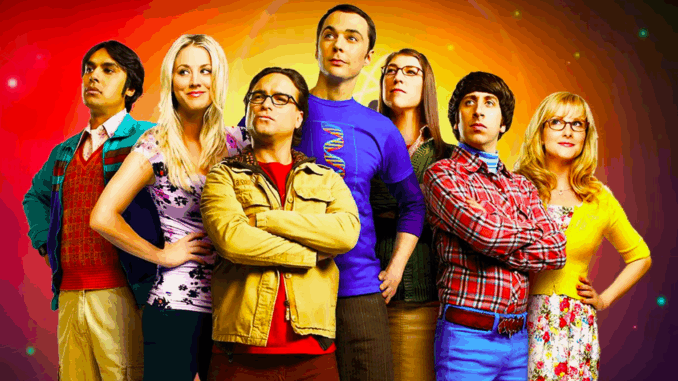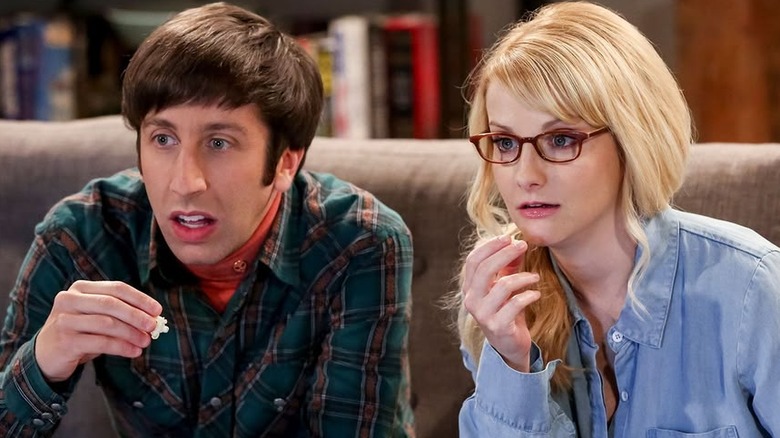
Setting the Stage: A Traditional Sitcom in an Untraditional Era
When The Big Bang Theory premiered in 2007, it seemed almost old-fashioned. It used a multi-camera format, filmed in front of a live studio audience, and relied heavily on punchlines and laugh tracks. In an age of increasingly cinematic single-camera comedies like The Office, 30 Rock, and Parks and Recreation, Chuck Lorre’s geek-powered sitcom appeared to be a step back.
But what the critics underestimated was The Big Bang Theory’s ability to reinvent a familiar form by infusing it with specificity, scientific precision, and long-form character development—without ever abandoning the laugh-out-loud pace of a traditional sitcom.
Over 12 seasons, the show quietly but effectively evolved the expectations of what a network comedy could be, laying the groundwork for its own spin-off universe while pushing the boundaries of story arcs, emotional resonance, and inclusivity in mainstream TV.
Science as a Narrative Engine
One of the most unique traits of The Big Bang Theory was its deep integration of actual science. The show employed physicists and science consultants (including UCLA’s Dr. David Saltzberg) to ensure authenticity in equations, whiteboard content, and terminology. It wasn’t just window dressing—science was often central to the plot.
Sheldon’s string theory work, Leonard’s experiments with lasers, and Raj’s astrophysical pursuits all became natural extensions of the characters, not just punchline material. This gave the show credibility and drew in an audience often ignored by primetime TV: scientists, engineers, students, and geeks of all kinds.
In doing so, the series turned theoretical physics into entertainment—an achievement that no mainstream sitcom had ever accomplished on such a scale.
Evolving with the Characters
At its core, The Big Bang Theory was a show about friendship. But unlike many sitcoms that reset character development at the start of every episode, this series allowed its characters to grow—sometimes slowly, sometimes awkwardly, but always meaningfully.
Leonard evolved from a timid people-pleaser to a confident, loving partner. Penny transformed from a stereotypical “hot neighbor” into a complex, career-minded woman who found her own identity outside the men around her. Even Sheldon—rigid, narcissistic, borderline unlovable in season one—grew into a husband, a Nobel Prize winner, and someone capable of genuine vulnerability.
The show’s writers skillfully wove these changes into multi-season arcs, making growth part of the comedy, not an obstacle to it.
Expanding Representation—One Nerd at a Time

At a time when network comedies were still overwhelmingly centered on traditionally masculine, athletic, or socially dominant male leads, The Big Bang Theory placed hyper-intellectual, emotionally awkward men at the forefront—and didn’t make them the butt of the joke.
Yes, their social struggles were often mined for laughs, but the show never suggested that intelligence made them inferior. Instead, their brilliance was celebrated. Over time, the show also made key improvements in gender dynamics, most notably with the additions of Amy Farrah Fowler and Bernadette Rostenkowski, both brilliant scientists in their own right.
By the final seasons, the series featured an ensemble where the women were just as nerdy, intelligent, and socially complex as the men—a balancing act many shows have failed to pull off.
A Massive Audience in a Fragmented Landscape
In an era of cable fragmentation and streaming wars, The Big Bang Theory did something extraordinary: it dominated network ratings. From season 5 onward, it consistently ranked among the top-rated shows on television. By season 11, it was #1.
How did a show about physics lectures and Halo Night outperform flashier, more high-concept series?
Part of the answer lies in its emotional accessibility. No matter how obscure the science or geek references got, the heart of the show remained grounded in relatable themes: love, anxiety, loneliness, ambition. Its characters felt real—flawed, inconsistent, sometimes petty, but ultimately kind. That kind of emotional honesty rarely goes out of style.
Leaving a Legacy That Matters
When The Big Bang Theory ended in 2019, it left behind more than reruns and memes. It carved out a blueprint for how sitcoms could embrace niche subcultures without condescension. It proved that network comedy didn’t have to chase trends or adopt a faux-documentary style to feel modern. And it showed that traditional sitcoms could still break new ground—quietly, but powerfully.
Now, with successful spin-offs like Young Sheldon and Georgie & Mandy’s First Marriage, and a new series (Stuart Fails to Save the Universe) on the horizon, the universe Chuck Lorre created continues to expand.
But perhaps the most lasting legacy of The Big Bang Theory is its affirmation that brilliance, in all its awkward glory, deserves a place on the couch next to the rest of us.
